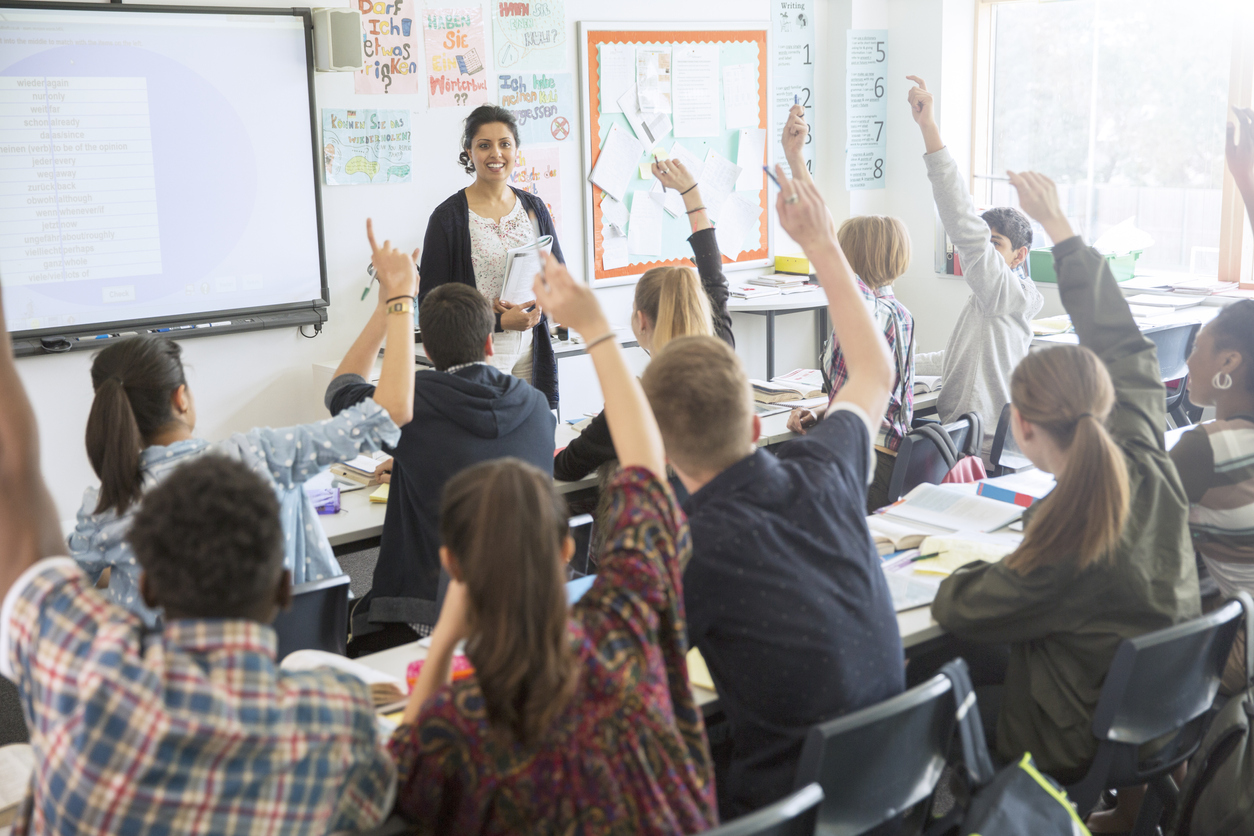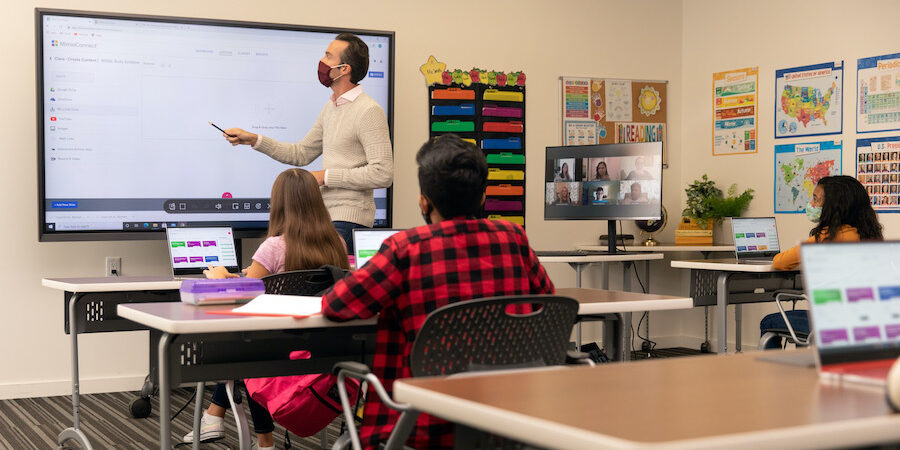Get Top Results with Primary Science Tuition Singapore from Experienced Tutors
Get Top Results with Primary Science Tuition Singapore from Experienced Tutors
Blog Article
Exploring the Different Mentor Strategies in Key Scientific Research Education And Learning Today
The landscape of key scientific research education is evolving, with different mentor strategies getting prestige in modern classrooms. Inquiry-based discovering, hands-on experiments, and the combination of technology are redefining exactly how educators involve young minds. In addition, collective techniques and distinguished instruction are being utilized to cater to the diverse requirements of pupils, boosting both interaction and understanding. As we examine these techniques, concerns occur regarding their performance and the ramifications for future academic methods. What might these shifts in approach mean for the next generation of learners?
Inquiry-Based Discovering
Inquiry-Based Knowing (IBL) is a pedagogical strategy that motivates trainees to explore clinical ideas with questioning, investigation, and hands-on testing. This method highlights the role of trainees as energetic participants in their knowing, promoting vital reasoning and problem-solving skills. By engaging with real-world questions, trainees become curious and determined, which boosts their understanding of scientific principles.
In IBL, educators act as facilitators, assisting students as they browse their queries rather than supplying information directly. This student-centered method permits distinction, suiting numerous learning styles and paces. Pupils develop abilities in formulating theories, creating experiments, and evaluating information, which are critical for scientific proficiency.
Furthermore, IBL cultivates cooperation amongst pupils, urging them to share concepts and findings. This cumulative query advertises social abilities and a sense of community within the classroom. Moreover, the procedure of inquiry urges resilience, as pupils discover to accept failing as a stepping stone towards understanding.
Hands-On Experiments
Hands-on experiments are an important component of reliable science education, matching the principles of inquiry-based discovering. These experiments enable students to engage straight with clinical principles, fostering a much deeper understanding via experiential learning. By controling products and observing outcomes, young learners can understand abstract concepts in substantial means.
Such activities promote critical thinking and problem-solving abilities, as trainees assume outcomes, conduct experiments, and evaluate outcomes. This procedure encourages them to ask concerns, refine their understanding, and create a clinical attitude. Hands-on experiments can be tailored to diverse learning styles, ensuring that all trainees have the chance to involve meaningfully with the content.
In addition, hands-on experiments often motivate collaboration amongst peers, advertising synergy and communication abilities. Functioning in teams makes it possible for students to share concepts, discuss searchings for, and find out from one an additional, which improves their general educational experience.
Integrating hands-on experiments right into the key science curriculum not only improves the learning environment but additionally cultivates a lifelong passion in scientific research. By proactively joining their education and learning, trainees are more probable to develop an interest for clinical query that prolongs past the class.

Innovation Assimilation
Integrating technology into key science education and learning has actually ended up being significantly important in cultivating student involvement and enhancing learning results. Using electronic tools, such as interactive simulations, online laboratories, and educational software application, gives trainees with opportunities to explore clinical principles in innovative ways. These sources assist in a much deeper understanding of intricate subjects by enabling learners to visualize and manipulate variables that would certainly be impractical in a conventional classroom setting.
Moreover, innovation integration encourages individualized learning experiences. Pupils can advance at their own rate, taking another look at tough principles through multimedia sources, which provide to various knowing styles. This versatility not just supports specific growth however also grows a feeling of freedom in students.
Furthermore, innovation functions as a bridge to real-world science, linking students with existing research study and specialist payments. Access to online databases and scientific journals widens pupils' perspectives on clinical query and fosters essential assuming skills.
Collaborative Understanding
Collaborative discovering plays an important function in main scientific research education and learning my site by fostering teamwork and interaction skills amongst students. This approach encourages learners to collaborate, share expertise, and participate in analytical, which enhances their understanding of scientific principles. By taking part in group tasks, trainees find out to verbalize their ideas, pay attention to varied viewpoints, and discuss remedies, all of which are essential abilities in both real-world and academic contexts.

Research suggests that collaborative discovering can bring about enhanced inspiration and engagement in science topics, as pupils locate enjoyment in shared experiences (primary science tuition Singapore). In addition, this method prepares students for future joint ventures, outfitting them with the abilities required for reliable team effort in college and expert atmospheres. Eventually, welcoming joint learning in primary science education and learning can considerably enrich the learning experience and advertise a much deeper understanding of clinical questions
Differentiated Instruction

Distinguished direction can materialize in various means, such as differing the material, processes, or products of discovering. Teachers may use tiered tasks that offer varying degrees of intricacy, enabling students to work at their respective preparedness levels. In addition, flexible grouping strategies can help with collaboration amongst pupils with different capabilities, fostering peer understanding.
Assessment plays a crucial role in this strategy, as it notifies direction and assists educators comprehend each student's distinct demands. Formative analyses, such as quizzes and monitorings, can lead teachers in readjusting their methods to enhance learning end results. primary science tuition Singapore. Eventually, by applying set apart instruction in main scientific research education and learning, teachers can grow a much more fair and effective learning setting, equipping all trainees to reach their full possibility in understanding clinical phenomena
Conclusion
In summary, the diverse teaching methods in main scientific research education and learning, consisting of inquiry-based learning, hands-on experiments, modern technology integration, why not check here collaborative learning, and set apart direction, collectively add to an extra reliable knowing setting. These techniques promote critical thinking, analytical abilities, and a much deeper comprehension of clinical concepts. By executing these methods, educators can create appealing and helpful class that deal with the different needs of pupils, ultimately fostering a long-lasting rate of interest in science and enhancing academic accomplishment.
Inquiry-Based Learning (IBL) is an instructional strategy that encourages trainees to discover scientific concepts with wondering about, investigation, and hands-on testing.Collective discovering plays an important role in main science education and learning by promoting synergy and communication skills among trainees.Research study indicates that collaborative learning can lead to increased inspiration and interaction in science subjects, as trainees discover enjoyment in common experiences.In cultivating a comprehensive discovering atmosphere, distinguished instruction arises as a key strategy to fit the diverse demands and capabilities of pupils in primary scientific research education and learning. Eventually, by executing distinguished instruction in key scientific research education, teachers can cultivate a much more equitable and reliable understanding environment, equipping all pupils to reach their complete potential in recognizing clinical sensations.
Report this page